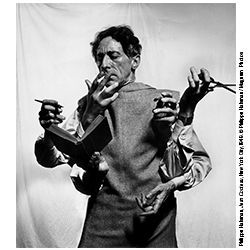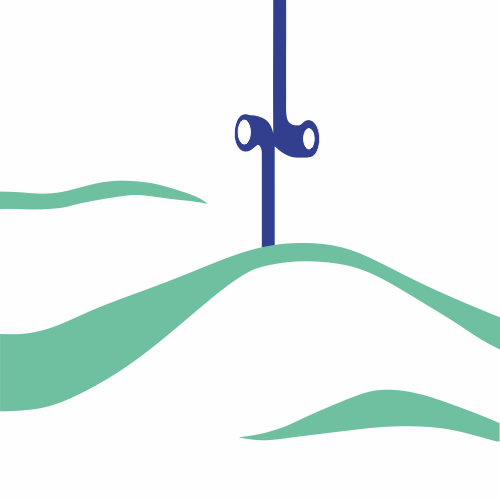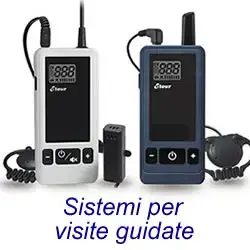A new museum opens in Domodossola: the Gian Giacomo Galletti Civic Museums
The appointment is for June 18: that’s the date set for the inauguration of the “Gian Giacomo Galletti” Civic Museums, which will open to the public in Domodossola’s Palazzo San Francesco, in the heart of the Borgo della Cultura in the capital of the Ossola Valley. It is a multidisciplinary and eclectic institute that tells the story of a frontier territory open to the world, and nurtured by a strong collecting impulse, especially between the 19th and 20th centuries. It is several museums united in a single institute, representing a marked spirit of research and exploration that is part not only ofOssola but ofItaly as a whole, and which sets itself the ambitious goal of projecting the Gian Giacomo Galletti Civic Museums into the international spotlight.
After multiple vicissitudes and uses, Palazzo San Francesco shows itself to the public with a renewed look, following a thorough restoration and museographic rearrangement that lasted several years. Under the direction of Milanese architect Paolo Carlo Rancati, various workers and firms worked, each in their specific professional field, always taking into consideration the identity of the Ossola territory. The palace, built on an ancient Franciscan church that is still frescoed, sees the museums organized on three exhibition levels: the ground floor (the 13th-century Franciscan church) dedicated to temporary exhibitions, the second floor with the Museum of Natural Sciences, and the second floor with the Picture Gallery, the Archaeological section, the Sacred Art section and a part dedicated to graphics, with a selection of drawings from the late 16th century to the 20th century. Director and curator of the Gian Giacomo Galletti Civic Museums, Antonio D’Amico, worked in synergy with architect Paolo Carlo Rancati, designer of the museographic layout, enriched by site-specific interventions by artist Gianluca Quaglia.
First and foremost, the museum is intended to be a geography of Ossola collecting, prompted by the Galletti Foundation, which purchased the building in the late 19th century, and conceived by men and women who traveled and donated to the museums works of art and artifacts from not only the valleys, but also and especially from different parts of the world. The Civic Museums are the result of the work of a massive restoration and recovery campaign that involved 15 restorers of different types who worked on 63 paintings, 23 stone artifacts, 287 archaeological finds, 29 sacred furnishings, more than 40 wooden furnishings from the period, 20 wooden sculptures, as well as painted glass and carvings, as well as 2,000 stuffed animals and as many minerals.
The palace, erected in the early 19th century on the ancient Franciscan church, thus returns to be a cultural center, just as it was at the dawn of the 20th century, revealing the historical, artistic and naturalistic identity of Ossola, a border territory with continuous exchanges, openings and suggestions, and with artists who deserve to be rediscovered, as Antonio DAmico, director and curator of the Gian Giacomo Galletti Civic Museums, tells us: “Palazzo San Francesco is the collection of many museums that tell the story of a border territory, which on one side looks to Italy and on the other to neighboring countries, particularly Switzerland and France. To enter inside Palazzo San Francesco, especially at this precise moment in history, is to immerse oneself in a privileged observatory where one can rediscover the history and cultural identity of Ossola, but also a place that is a hotbed of ideas for building the future and looking far ahead. From children to the elderly, everyone can find here a suggestion, a restart, an encounter with so many areas of knowledge and human living. Palazzo San Francesco is a mirror of what a Civic Museum should be, which is a space without boundaries where one can feel at home and find a little of oneself.” The Gian Giacomo Galletti Civic Museums are documented and illustrated in a guidebook published by Sagep Editori.
Palazzo San Francesco and Gian Giacomo Galletti
Palazzo San Francesco was built by the Belli family within the first decade of the nineteenth century, leaving inside the old Franciscan church, one of the first built in Ossola, already active in the mid-thirteenth century. As you enter, you can still see the shape of the church with a vast nave and two side aisles, separated by columns with carved capitals, including the fascinating relief of the flower of theApocalypse, and bays enriched with frescoes from the second half of the thirteenth century leading to the age of Carlo Borromeo.
The vicissitudes of Palazzo San Francesco are linked to those of the Gian Giacomo Galletti Foundation, which purchased it in 1881 from the Belli family. The Foundation was established at the behest of Gian Giacomo Galletti (Colorio, 1798 Paris, 1873), a Piedmontese man of humble origins who made his fortune in the manufacture of gold, silver and enamel and, having accumulated a large fortune, became a member of the Italian parliament and in 1869 established a foundation in his name for the purpose of providing over time for the education and moral education, the growth of industry, for charitable purposes and in general for the improvement of the economic conditions of the inhabitants of Ossola. Its philanthropic intentions included the establishment in Domodossola of professional schools, a library, theater and museums. Thus the Galletti Foundation, respecting the founder’s wishes, undertook a challenging cultural-historical activity that has come down to us. The Foundation ceased to exist in 1984, and all movable and immovable property passed to the City of Domodossola.
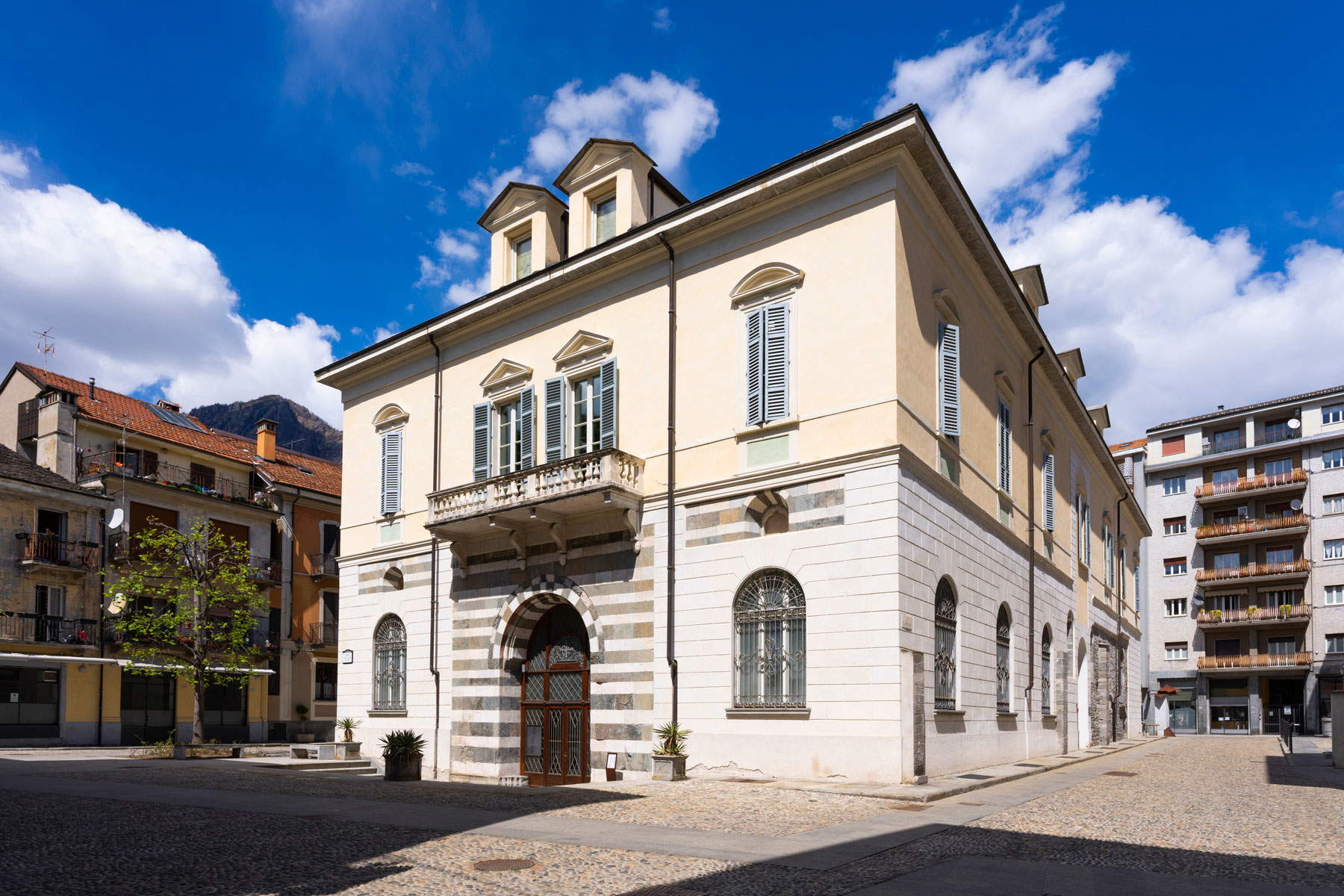 |
| The Palazzo San Francesco, home of the Gian Giacomo Galletti Civic Museums. Photo by Alberto Lorenzina |
The Museum of Natural Sciences
On the second floor of the Gian Giacomo Galletti Civic Museums one enters the Museum of Natural Sciences, with a rich selection of stuffed animals of large, medium and small size, an important collection of minerals, including those of the scholar Giorgio Spezia, a timely stratigraphy of the Simplon, a section of botany, with particular reference to species from theOssola area, and more entomology, malacology, comparative anatomy and some interesting organic findings. At the beginning of the tour, one is greeted by the luminous installation Foresta Giardino, a work of contemporary art created by Gianluca Quaglia, which is the pivot around which the museum’s layout revolves, a place where nature meets culture. The Forest is the free and wild environment par excellence, the garden on the other hand suggests the intervention of man, the organization of elements and study. The two terms tell of a process that is at the heart of scientific research, namely the transition from the mysterious to the known, in an attempt to enhance all components of nature.
The Natural Science Museum of Domodossola aims to immerse the visitor in an environment in which the balance between the place of origin of the natural elements and the artifacts that are investigated here is re-established through contemporary art and thus with the permanent interventions conceived and realized by Gianluca Quaglia. The walls of the Museum are painted with colors representing the transition from day to night: pink and pale blue, light blue, light blue, orange, blue and dark blue. One witnesses, as in nature, the rising of the sun and its setting, with a slow movement leading toward night and a starry sky. In the sub-arch on the stairs, going up this floor, and on two walls of the Museum, in fact, the artist has intervened on pre-existing plasterwork by making small portions of the sky and colored stars, made of ceramics, emerge.
The creation of the Museum of Natural Sciences originates from the plans of Gian Giacomo Galletti: following his death in Paris on May 31, 1873, the prolific activity of the Galletti Foundation, which the newly elected parliamentarian from Ossola had made official in 1869, began, with the aim of supporting and increasing the economic development and education of Ossola, with the creation of professional schools, libraries and museums. The project to create a nature museum attracted lively and enthusiastic personalities who, with their expertise and diverse academic backgrounds, contributed significantly to the birth of this museum. An initial nucleus of mineralogical specimens and pieces of the most varied plant species was exhibited in 1875 on the second floor of the north wing adjoining the main body of Palazzo Mellerio, at that time the headquarters of the Foundation. On June 9, 1879, following a vast increase in collections, the Museum was opened to the public for the first time in the rooms of Palazzo Mellerio.
One of the prominent figures who contributed to the birth and considerable increase of the naturalistic collections was Lieutenant Colonel Giulio Bazetta, born in Omegna in 1838, a patriot in the Alpine Corps and a graduate teacher with a predilection for nature and science. He made taxidermy his passion and many of his works can be admired in these rooms. From May 1, 1882, he was the first director alleconomia, material and control of the Museum of Natural Sciences. The Galletti Foundation in 1881 bought the building that was owned by the Belli family, and for the first time, the naturalistic collections made their entrance on the second floor of Palazzo San Francesco in 1885. From that time, the museum was first moved to Palazzo Silva and then several times rearranged and repurposed, until its final location in the storerooms of the municipality of Domodossola, an entity that, following the extinction of the Foundation in 1984, acquired all the holdings, creating the Musei Civici. Management of the Natural Science Museum’s collections in the early twentieth century was in the charge of Guido Bustico, who had a humanist background but a strong passion for science and who did an excellent job of compiling catalogs and reorganizing the collections.
Almost all of the materials have been classified and catalogued, but the collections are still being reordered and studied today, a testament to the dynamic and ever-changing nature of nature museums. For many years all of the collections remained in storage, invisible to the public, awaiting the restoration of Palazzo San Francesco and subsequent relocation, where they can now be admired in their uniqueness, which tells us a fragment of the history of the Ossola area. The collections, which have been enriched over time as a result of donations from local naturalists and prominent figures in the scientific culture of the time, are divided into different sections: mineralogy, geology, paleontology, botany and zoology.
 |
| The Museum of Natural Sciences. Photo by Alberto Lorenzina |
 |
| The Museum of Natural Sciences. Photo by Alberto Lorenzina |
 |
| The Museum of Natural Sciences. Photo by Alberto Lorenzina |
 |
| The Museum of Natural Sciences. Photo by Alberto Lorenzina |
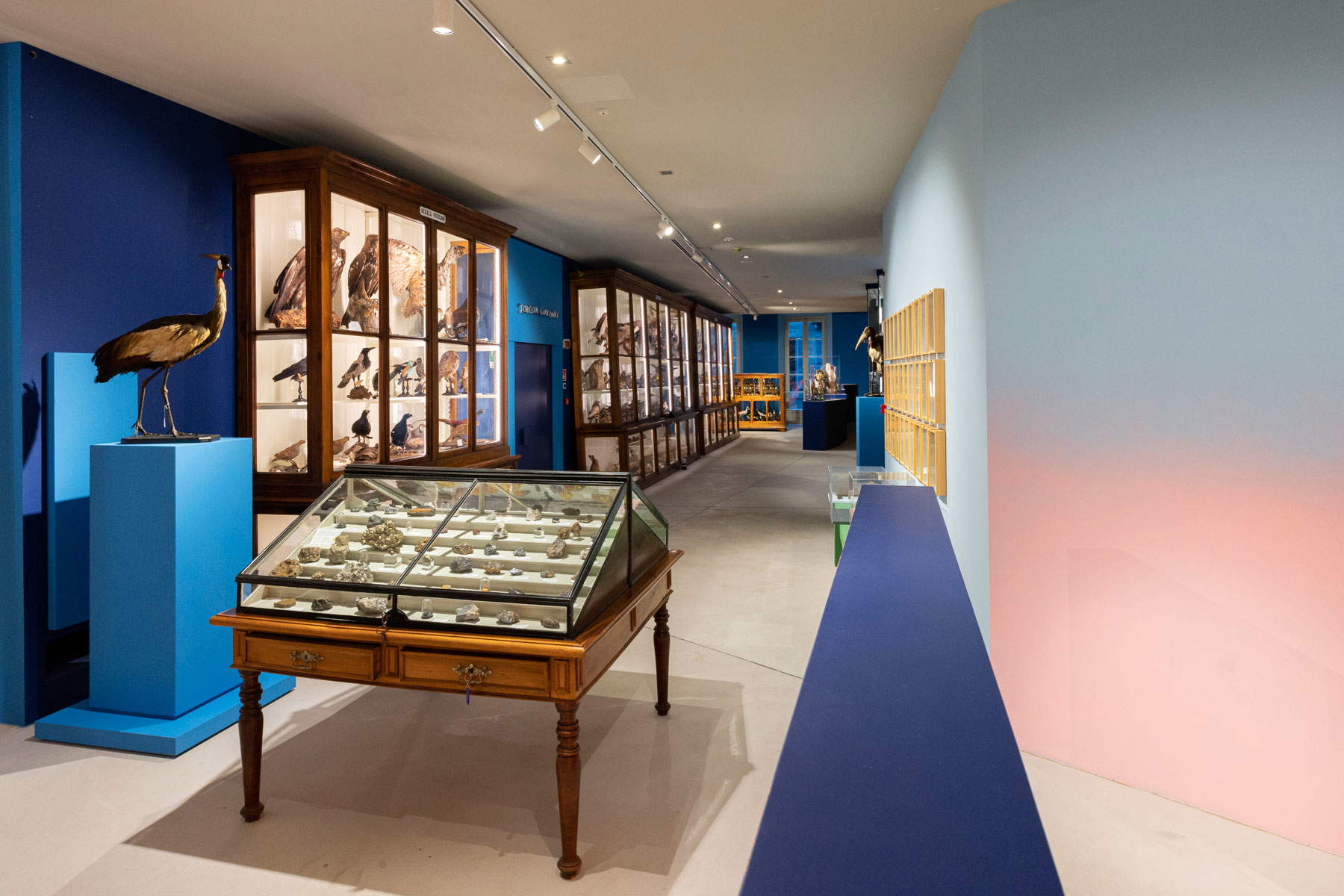 |
| The Museum of Natural Sciences. Photo by Alberto Lorenzina |
The Archaeological Museum
In the archaeological section one can admire artifacts from different ages and cultures, such as from ancient Egypt, prehistory, the Lepontian age, that is, the first inhabitants of Domodossola, and Roman times. Above all, the grave goods of the Ossola warrior Claro Fuenno return to Domodossola and will be visible for the first time after careful restoration. The high class is underscored by the presence of a sword, a spear, balsam jars and fine glass cups, such as the one with polychrome ribbons likely from the eastern Mediterranean.
The first nucleus of the Domodossola Museums promoted by the Galletti Foundation was the nature section, started in 1875. Towards the end of that year a first donation of ancient coins was received, followed by other lots of numismatic and archaeological antiquities donated by private citizens, at the encouragement of director Giacomo Trabucchi and the Foundation’s advisors. For these two sections alone between 1875 and 1909, more than forty benefactors were counted, which included prominent members of the cultural, political and social worlds not only of Domodossola, but of various parts of Piedmont and Italy: lawyers, notaries, doctors and engineers, priests, military personnel, hoteliers, entrepreneurs, merchants and artisans, clerks and artists. The collections were growing without a unified plan; in particular, the numismatic section was increased by several donations. The greatest contribution to the archaeological collection was due to the Vigezzo-born physician Giacomo Pollini (Paris, 1827 - Turin, 1902), who enriched it with continuous shipments of artifacts from 1880 until his death. In addition to materials from Vigezzo, Piedmont and Lombardy, especially from prehistoric times, he donated Egyptian artifacts, collected during a trip to Africa. Particularly contributing to the archaeological collection was Cavalier Felice Mellerio (Craveggia, 1831 - Masera, 1905), who, during the construction and enlargements of his villa in Masera, repeatedly unearthed grave goods, which he donated to the Galletti Museums until 1892.
Samples of objects also arrived from the main excavations carried out in the Ossola area, such as some finds unearthed by Enrico Bianchetti in 1890-91 in the necropolis of Ornavasso (locality In Persona) and donated by his son Edgardo, and finds made by Egisto Galloni in 1898 and 1903 in the necropolis of Mergozzo (locality La Cappella) and Candoglia. Enriched then the Domese collections were entire grave goods discovered in minor localities: Vanzone (excavations 1874), SantAnna di Casale Corte Cerro (1863) and Gurro (archaeological excavation organized in 1886 by the Galletti Foundation and directed by Giacomo Trabucchi). With the support of artifacts from southern Italy, Rome and especially from the Ossola area, a didactic collection was established that was able to offer, alongside a duel-flight representation of Egyptian and Magna Greek antiquities, a complete development from the Neolithic to the Roman era, through evidence of the archaeological heritage of northern Italy.
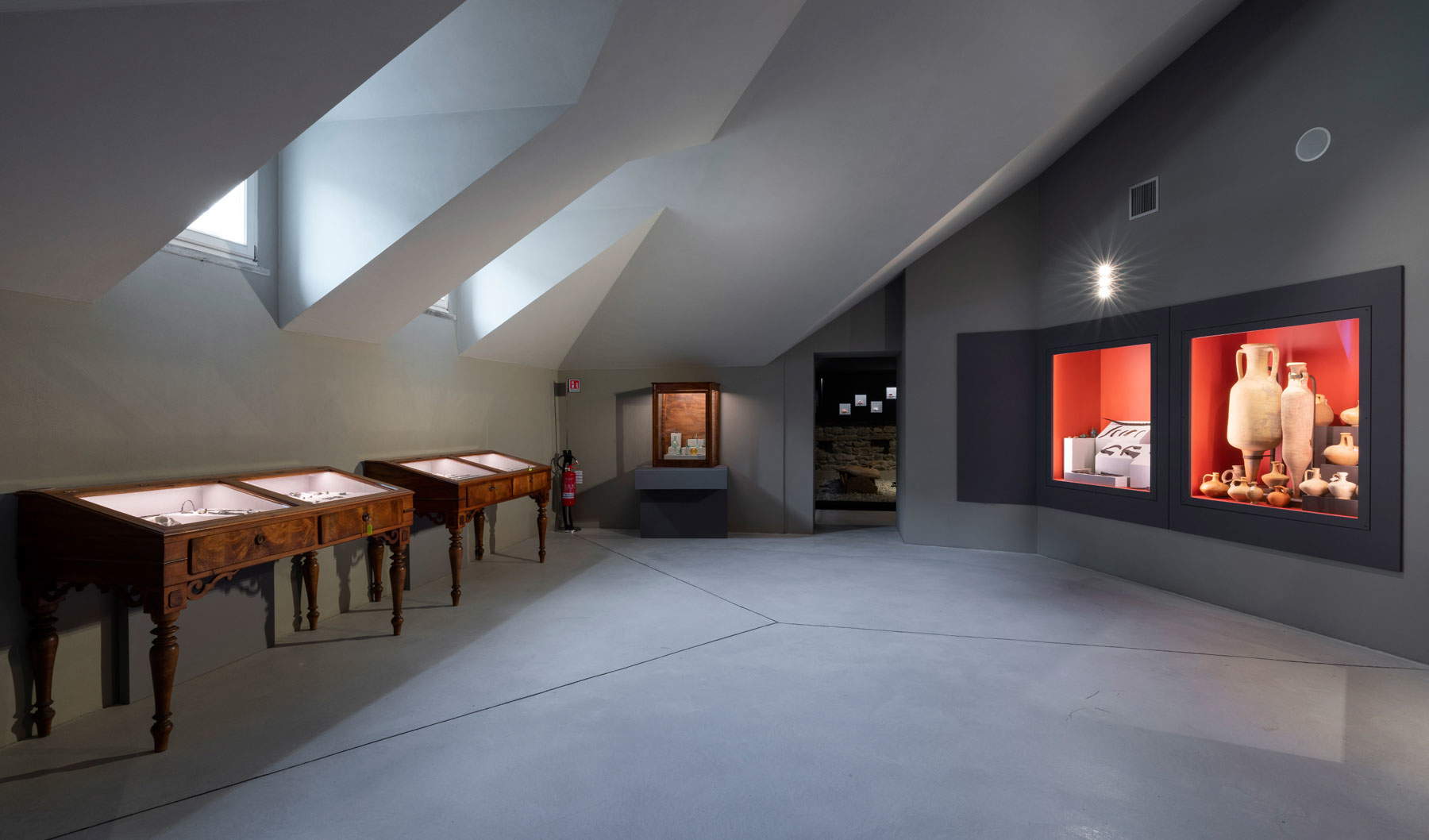 |
| The Archaeological Museum. Photo by Alberto Lorenzina |
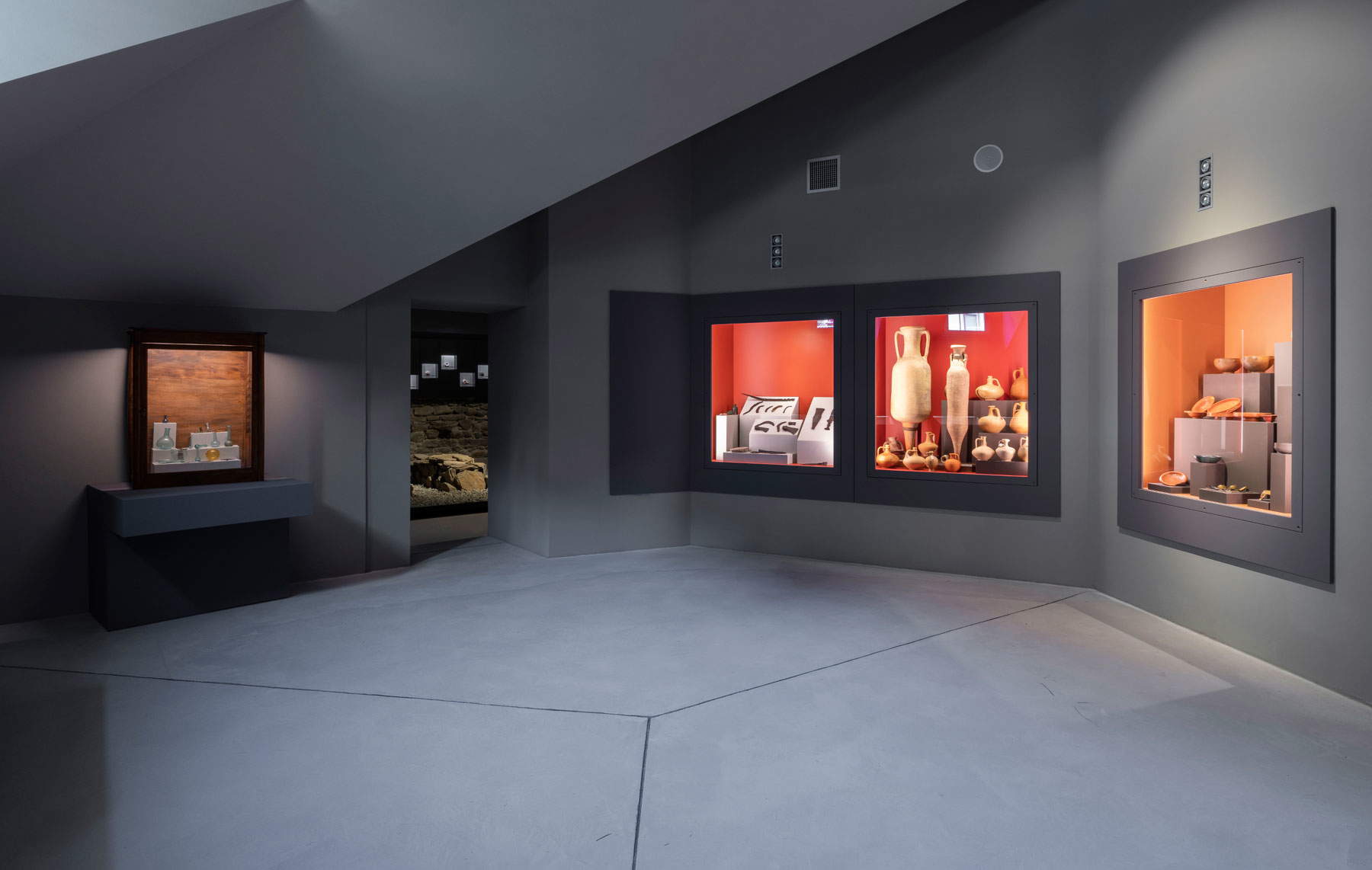 |
| The Archaeological Museum. Photo by Alberto Lorenzina |
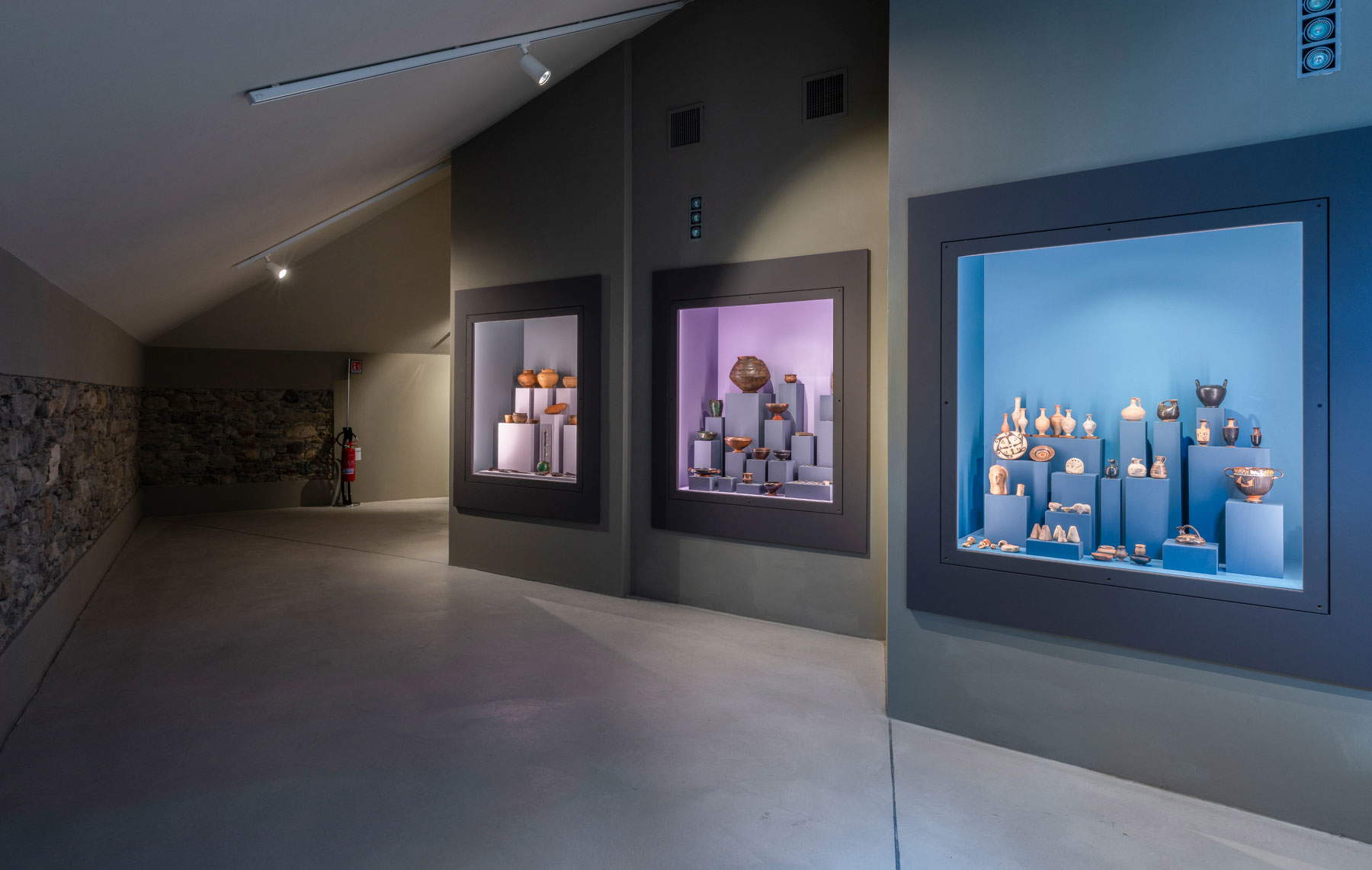 |
| The Archaeological Museum. Photo by Alberto Lorenzina |
The Picture Gallery and the Graphics Section.
The second floor of the museums is conceived as a moving space, in which one comes into contact with larte in its most intimate declinations, from the very distant origins of human identity with the archaeological museum, to the Pinacoteca with paintings and drawings dating from the late 16th century to the 20th century, created by artists who enriched the so-called Valley of the Painters, that is, the Val dOssola.
At the center of the second floor is the Pinacoteca degli artisti vigezzini, declined through the three schools of Ossola, that of Craveggia, that of Buttogno and the Rossetti Valentini school of Santa Maria Maggiore. It starts with the great altarpieces by Giuseppe Mattia Borgnis, who, in the heart of the 18th century, took the Ossola pictorial language as far as England, and by Lorenzo Peretti senior, a refined portraitist of everyday life. Heart of the exhibition are the works of the patriotic Giuseppe Rossetti, an artist thanks to whom the collection of paintings of the Municipality of Domodossola began. Among others, his is the intriguing as well as fascinating painting with Portraits of Ancient and Modern Painters, an ideal gathering around Michelangelo and Raphael most of the artists from Ossola. Romantic is the section devoted to the works of Carlo Gaudenzio Lupetti, Bernardino Peretti, Antonio Maria Cotti and Giovanni Baratta, painters who during the nineteenth century developed a strong sensibility that brought them closer to the winds of the Belle époque.
As for the graphic section, within wooden tables specially designed by architect Paolo Carlo Rancati and made, like the rest of the Museum’s furnishings, by the Franzini firm of Domodossola, 33 drawings that the Foundation obtained from Ossola donors in the late 19th century will be presented. This is a remarkable set of graphics ranging from the late sixteenth century to the dawn of the twentieth century. They are drawings that take up important works darte of the seventeenth century, testifying to the spread even in Ossola of the first-rate art between Rome and Bologna. Drawings that take up works by Annibale Carracci, Domenichino, Ciro Ferri and Carlo Maratti and then two attributed to the Flemish artist Jan Brueghel of the Velvets.
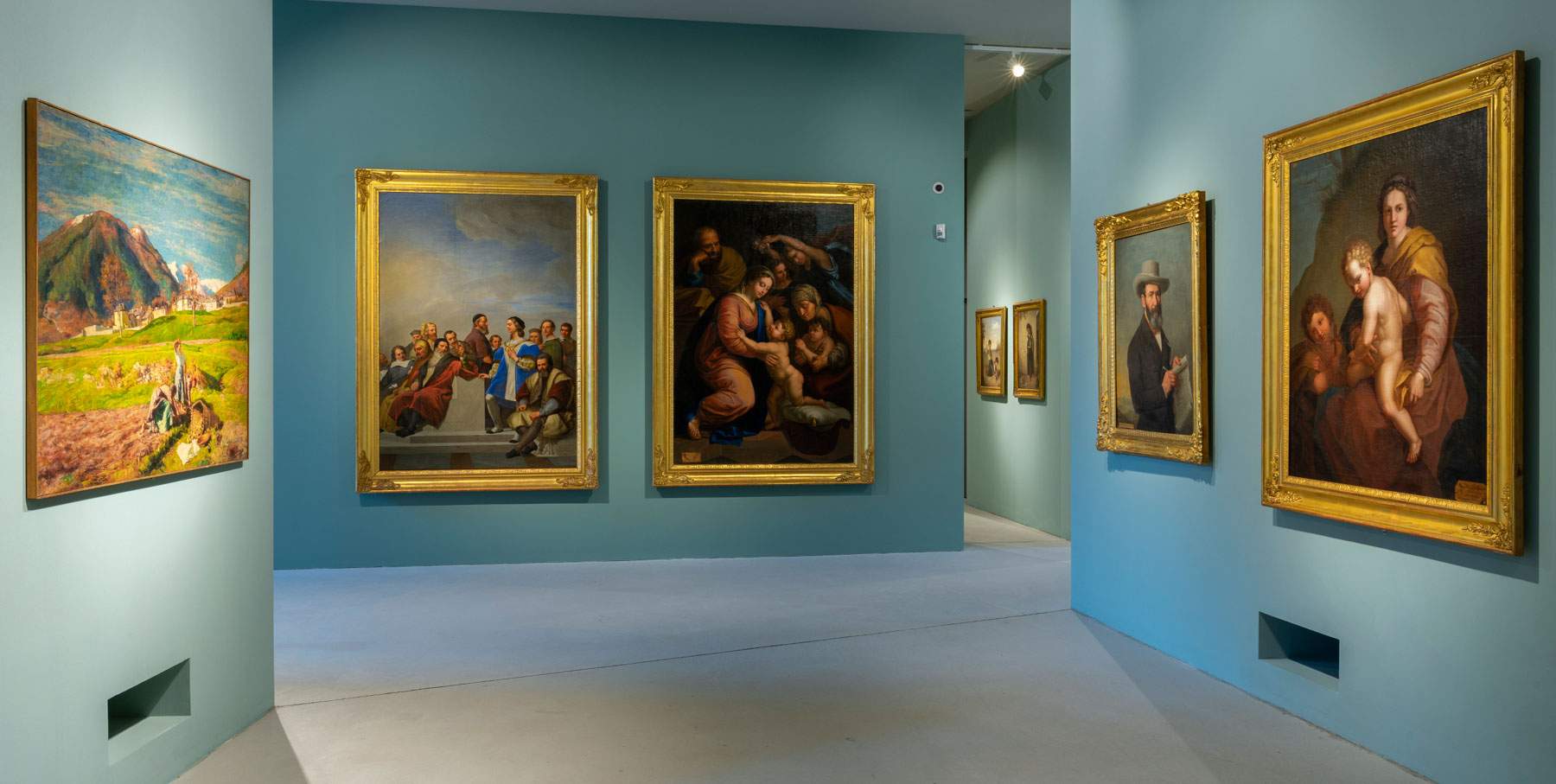 |
| The Pinacoteca. Photo by Alberto Lorenzina |
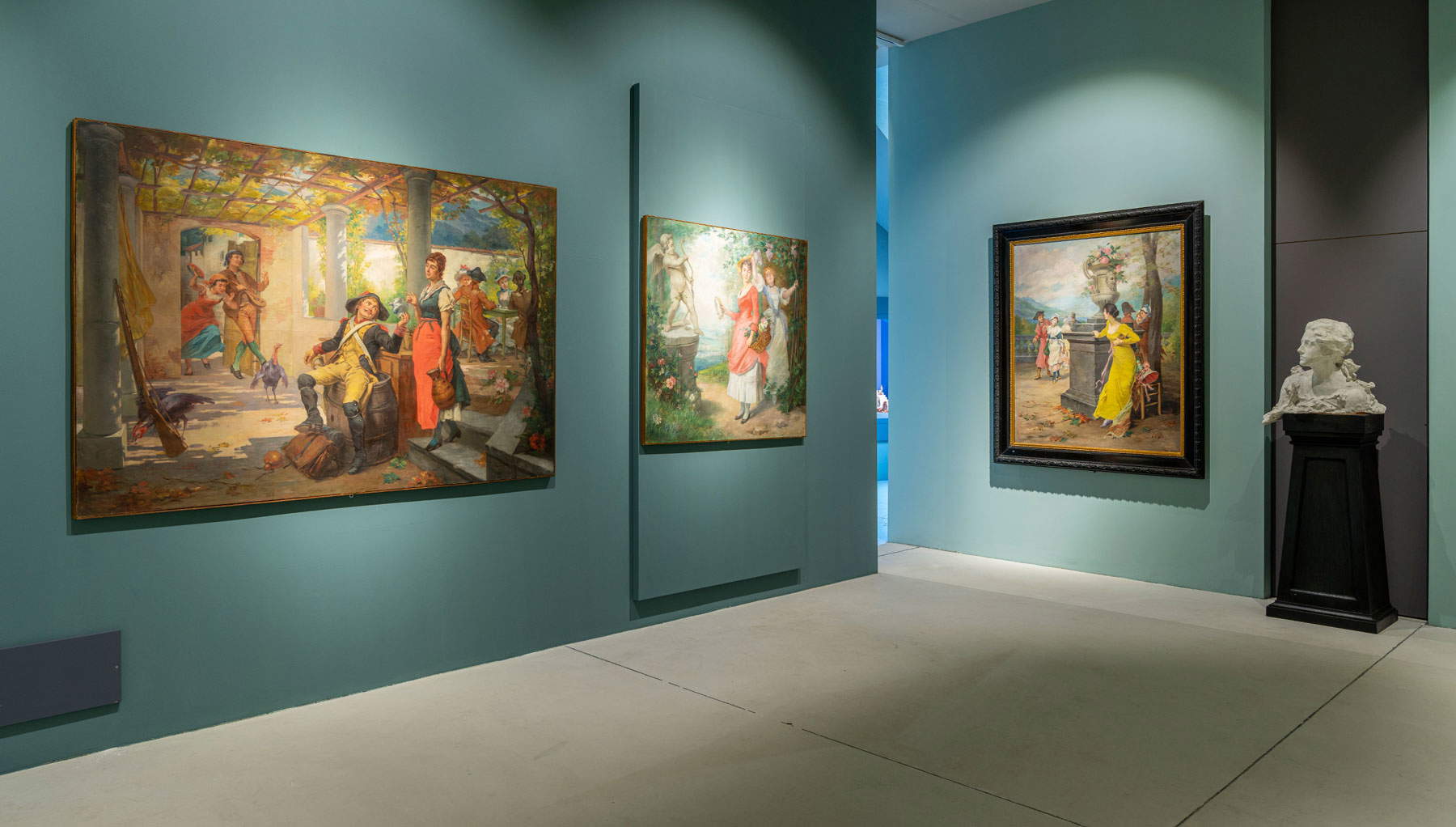 |
| The Pinacoteca. Photo by Alberto Lorenzina |
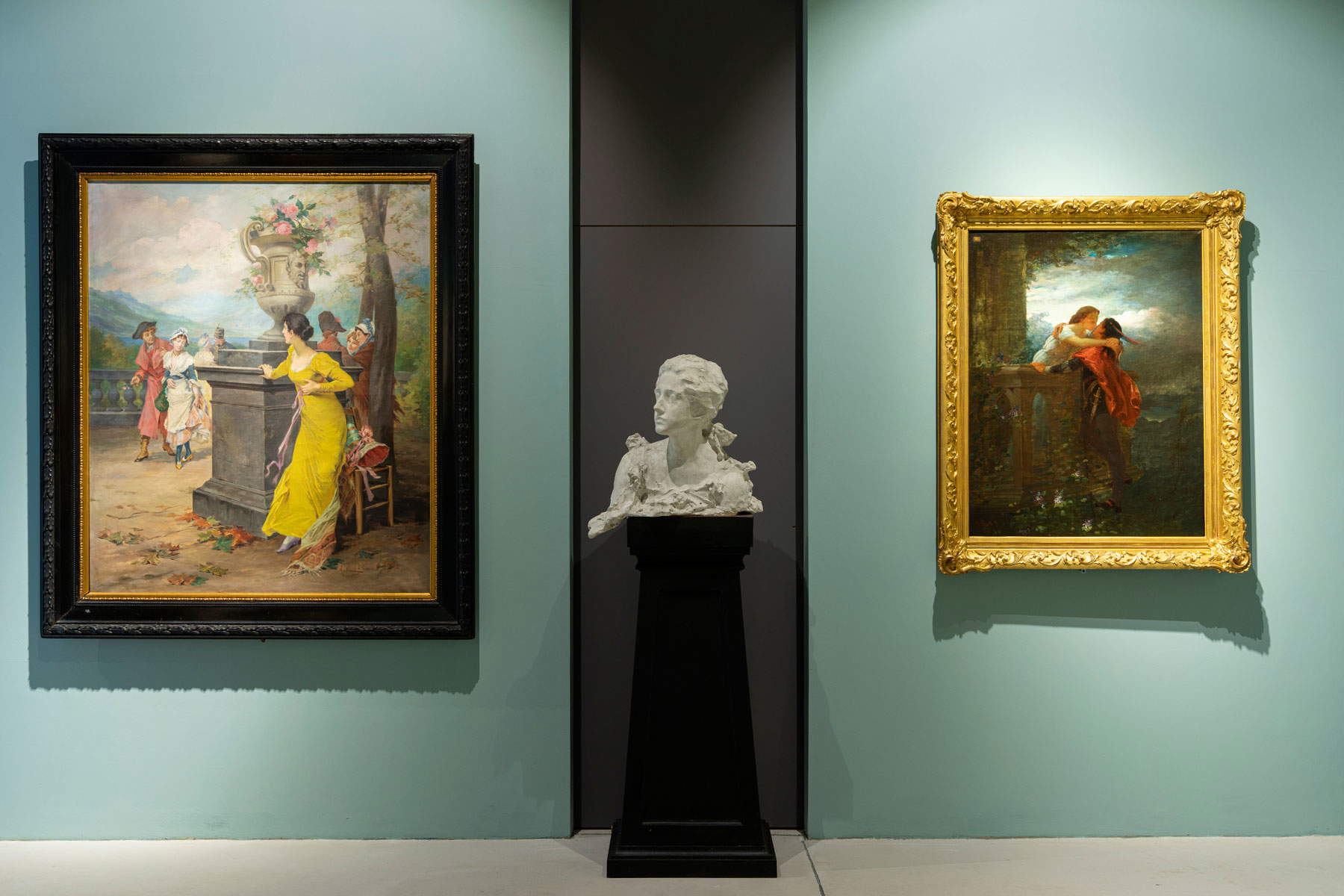 |
| The Pinacoteca. Photo by Alberto Lorenzina. |
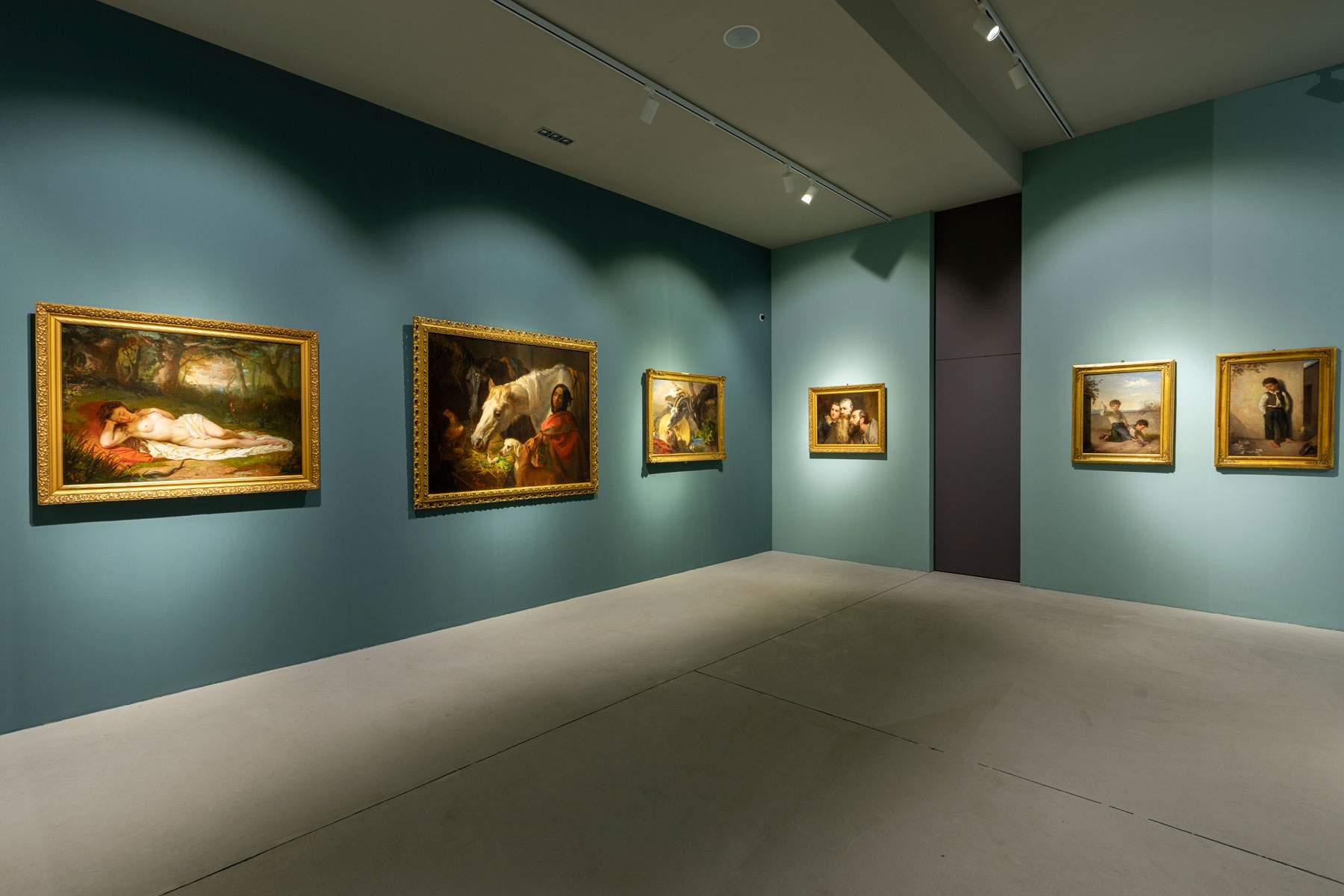 |
| The Pinacoteca. Photo by Alberto Lorenzina |
The Sacred Art section
The ecclesiastical furnishings on display are part of a collection that took shape, between 1880 and 1884, thanks to purchases and donations made by private individuals to the Galletti Foundation, when the latter had undertaken the initiative of procuring suitable space for the creation of an Ossola Museum, buying Palazzo Silva and Palazzo Belli, later renamed San Francesco. It was later supplemented by the furnishings seized from Cuzzago and deposited at the Galletti Museum by the Turin Superintendency in 1914. The entire collection consists of about 100 artifacts of various types, from which the most significant and valuable have been chosen. Broad categories characterize the artifacts used during sacred ritual. In particular, in the presbytery area the liturgical action took place around the altar, the place for which objects were mainly intended, such as the Paliotto and Carteglorie. Equally important were the furnishings related to the lighting of the church environment, including hanging lamps. Among the sacred vessels, eucharistic, for holy oils and reliquaries, chalices were used for the consecration of wine during Mass. A particular liturgical aspect is that of the incensing ceremony, used for burials and room perfuming, which took place with the thurible. In particular, the bronze specimen in the Museum has a cusped hut shape with angular protomes and can be dated between the 13th and 14th centuries.
Finally, the procession is a ritual present in every religion, loaded with symbolic values related to the concept of movement and communal prayer. It takes the form of a ritualized derivation of pilgrimage of which it is more circumscribed and determined, but unlike pilgrimage, which can be individual, the procession is always carried out by a community. Related to this religious moment are the Processional Cross, the Lantern and the Processional Standard. Finally, the exhibit is enriched by two statue crowns, a tondo with the Portrait of St. Charles Borromeo, and a precious pontifical pantofola that belonged to Pope Innocent IX Facchinetti (1519-1591), whose paternal family was of Cravegna origin.
The museum also has a collection of wooden sculptures that brings together a number of pieces of diverse, in some cases unidentified, origin. Some sculptures are the product of the dismantling of wooden altars in churches, replaced by new marble structures; sometimes they are donated fragments, but without any contextualization. It is not improbable for some artifacts that they came from the Reformed lands through Ossola merchants who may have acquired them by wresting them from Protestant iconoclasm and as such not directly ordered from Doltralpian workshops. For others, lacquisition may have been due to specific commissions, as with the High Swabian or Algau workshop altar, made in 1526 and coming from the parish church of Baceno, whose Christ the Judge, Gate of Paradise and Mouth of Hell can be admired.
The schools of origin also turn out to be different: they range from the Po Valley (see the two sculptures by De Donati), Ossola, Aronese (especially the figures of angels to be referred to Bartolomeo Tiberino) and Lombardy (in this regard, the heads of cherubs whose original location is unknown), to the Doltralpsian (exemplary is the fragment with the Flagellation of the German school, from the second decade of the 16th century). The proximity to the territory of Valais and the proven trade relations give reason for the pertinence of some artifacts to that context, and in this regard the fragments of the ceiling of the house in Domodossola in Via Briona are indicative, here referred to the Como-born Jacobinus Malacrida, who precisely in Sion, the capital of Valais, had given exemplary proof of himself, after having been present in Locarno and Como. In the same direction are explained the presences of a statue named after St. Theodulus, patron saint of that valley, and the head, severed from a statue, of the dead Christ, both referable to a sculptor from the same territorial area. In such heterogeneity the Museum’s sculptures well represent the Ossola reality, in a complexity linked to the network of relationships in which it is involved, which constitutes one of its most striking features.
Finally, conspicuous is the collection of painted glass: the pieces collected in the Museum are fragments of painted stained glass, which came in different periods, in good probability from local churches renovated over the centuries, but without precise identification of the places of origin. As is well known and well exemplified by Gianfranco Bianchetti’s studies, there was no shortage of stained glass in Ossola. The cases of the church of San Francesco in Domodossola, whose lost specimens are attributable to Lukas Schwarz from Bern and documented in 1511, of the parish churches of Crevola and Baceno, respectively with interventions by Hanz Funk from Zurich in 1526 and by Anton Schiterberg from Lucerne and workshop in 1547, are emblematic of the richness of artifacts of this kind and of the frequent Ossola gravitation to the Swiss region. It was precisely in Switzerland that a school of master glassmakers had developed between the 15th and 16th centuries, and the demands from Ossola patrons in those areas (Bern, before the Reformation upheavals, Lucerne also in the second half of the 16th century because of its loyalty to Catholicism) is not surprising, given the geographical proximity between the two territories and the proven trade relations. The vitreous artifacts collected by the Galletti Foundation are of different schools, but almost all of them are 16th-century, particularly of the second half of the 16th century, as the mannerist characters reveal. For some the linguistic definition is complex, given their fragmentary nature. For the Bishop’s Head, the language seems to decline in a direction where Lombard Renaissance legacies converge alongside Doltralpian ones. These glass artifacts, obsolete in the Novara diocese, despite the indefiniteness of provenance and precise stylistic affiliation, remain evidence of an extraordinary figurative season that had involved the Ossola churches, with the specificity of privileged links with the adjacent transalpine regions.
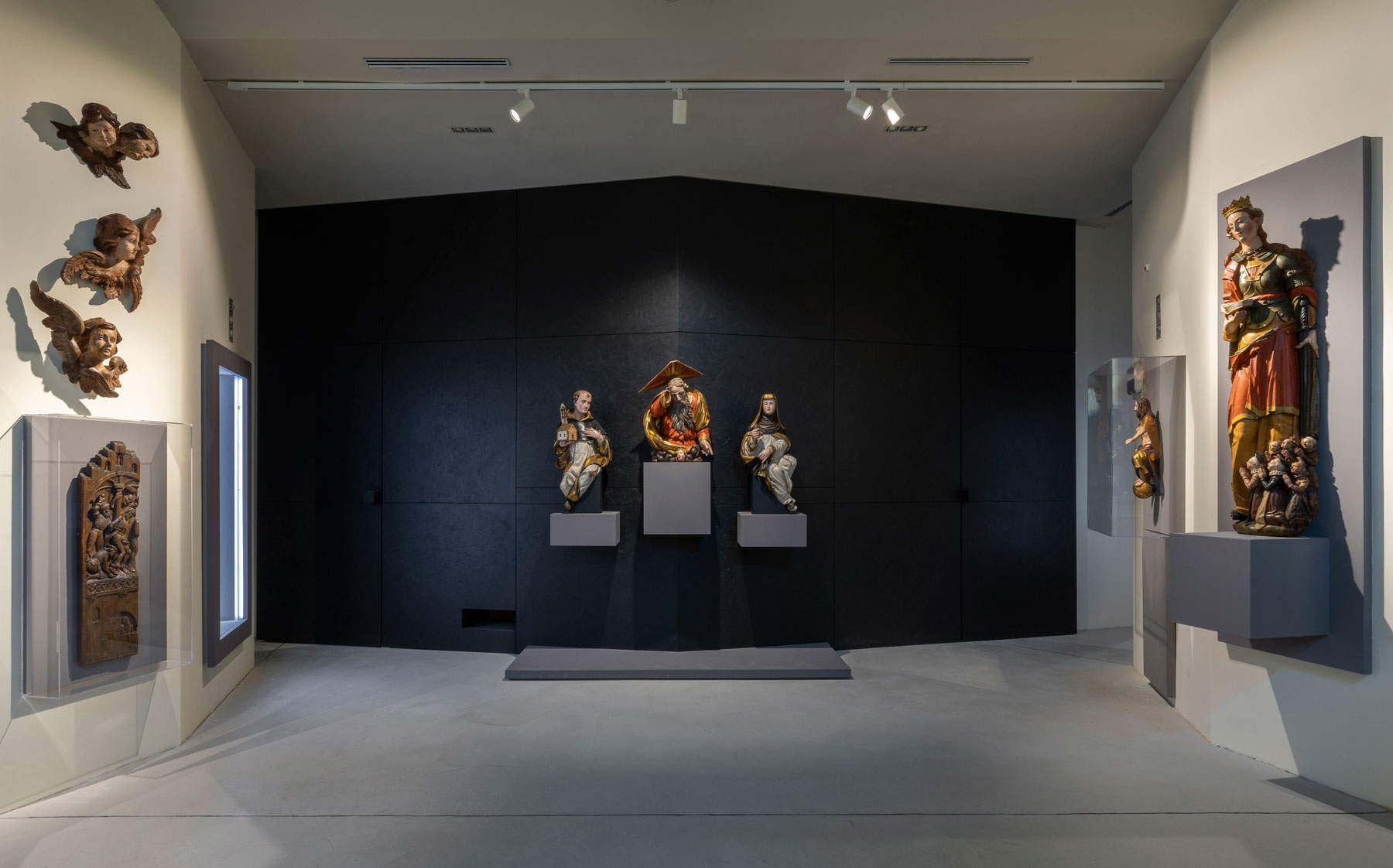 |
| The Sacred Art section. Photo by Alberto Lorenzina |
Practical information
Summer hours (June 19 to Oct. 10, 2021): open Fridays, Saturdays and Sundays from 10 a.m. to noon and 3 p.m. to 7 p.m. Winter hours (Oct. 16 to Dec. 31, 2021): open Saturdays and Sundays from 10 a.m. to noon and 3 p.m. to 6 p.m. Tickets: 5 euros full, 2 euros reduced schools, 3 euros university students, 2 euros over 65 and disabled. Combined ticket with Palazzo Silva (until Oct. 10): 6 euros full, 3 euros schools, 4 euros university, 2 euros over 65 and differently abled. Free for children under 5, guides, interpreters and tour leaders, accompanying class teachers, AMO cardholders and Regional Museums Card.
Guided tours can also be purchased: 2 euros for adults (group with minimum 5 people), 1 euro students. Reservations are required for the tours. Information can be found on the Domodossola Municipality website. Phone 0324/4921, Fax 0324/481402, email conservatore@comune.domodossola.vb.it - cultura@comune.domodossola.vb.it
 |
| A new museum opens in Domodossola: the Gian Giacomo Galletti Civic Museums |
Warning: the translation into English of the original Italian article was created using automatic tools. We undertake to review all articles, but we do not guarantee the total absence of inaccuracies in the translation due to the program. You can find the original by clicking on the ITA button. If you find any mistake,please contact us.



